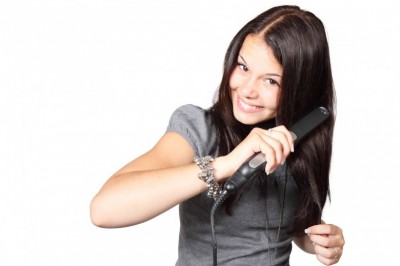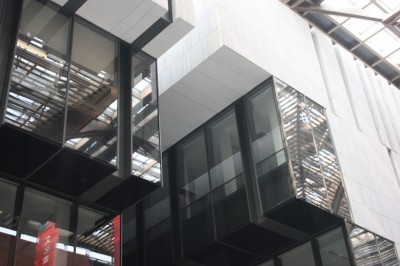Phase Change Materials; Eutectic Thermal Energy Storage Products
Ice Thermal Energy Storage (TES) has the advantage of universal availability, low cost and transport ability through other system components. However, a conventional ice TES system for air conditioning application requires low temperature chillers and therefore standard water chillers must be replaced with low temperature glycol chillers which operate with a lower evaporation temperature and consume more power.
If we can offer designers an ice which freezes and melts above or below 0°C (32 °F) these new products will open new horizons for environmentally friendly and economical systems for both New and Retrofit type process cooling / heating load shifting applications.
Phase Change Material (PCM) Eutectic solutions are mixtures of two or more chemicals which, when mixed in a particular ratio, have a freezing / melting point below or above water freezing temperature of 0C (32 °F) and they offer a thermal energy storage facility between -114 °C (-173 °F) and +164 °C (327 °F).
Eutectics are well-known and in fact early applications date back to the late 18th century however the separation and the life expectancy of these mixtures were unpredictable and therefore their wide spread usage was limited.
The disadvantages of a conventional HVAC chiller and ice (water ice) storage system can be overcome by utilising the latent heat capacity of various "Eutectic" mixtures without the need for minus circulation temperatures.Â
Phase Change Material (PCM) thermal energy storage not only enables the designer to utilise existing chiller technology but also enables charging by means of free cooling, i.e. without running the chillers
Although the term "Eutectic" is widely used to describe the materials we are interested in, a better description would be "Phase Change Materials" ("PCMs"). Unfortunately, very few of the documented PCM solutions are true Eutectics and so many have to be modified to obtain a material suitable for long term use.
PCMs can be broadly grouped into two categories; "Organic Compounds" and "Salt-based Products". The fundamental requirement for a modified Eutectic (PCM) Solution can be classified in three categories, namely stable solution (no separation or degrading), minimum supercooling / heating and finally close freezing and melting temperatures.
Â
There are three fundamental additives commonly used to modify hydrated salt based Eutectic PCM solutions. These three components are firstly Nucleating Agent which encourages Crystal formation and therefore minimises super cooling and the secondly additive is Freeze Depressant to achieve a lower phase change temperature and thirdly Gelling / Thickening Agent in order to overcome separation and degrading problems.
Once the above components have been carefully applied, a satisfactory Eutectic PCM Solution can be produced from the physical and thermodynamic point of views and commercially available solutions offer a range of -114 °C (-173 °F) and +164 °C (327 °F).
However, majority of suitable PCM solutions for HVAC and refrigeration systems are corrosive to commonly used pipe and line components and therefore suitable encapsulation techniques must be applied to overcome this problem while providing the best thermal performance. Various encapsulation techniques such as tube, flat container or alternatively ball concepts have been developed whereby the PCM solutions are encapsulated in plastic and / or metal shell.
The heat transfer between the surrounding media, which flows around or inside the unit and the surrounding PCM solutions, takes place from the outer or inner or the combination of both surfaces of the encapsulated PCM unit. These techniques are generally eliminates the contamination risk and offers an efficient, cost effective, practical and flexible new type of TES designs.
Modern societys reliance on refrigeration and air conditioning indicates that refrigeration and the associated environmental issues will be with us for a considerable time and therefore one has to utilise existing and available alternative technologies with minimum usage of energy.
A Positive Temperature Eutectic Phase Change Material (PCM) Thermal Energy Storage (TES) not only provides the end user with an Environmentally Friendly design but also the following additional benefits can be obtained:
•Â Reduced Equipment Size
•Â Capital Cost Saving
•Â Energy Cost Saving
•Â Environmentally Friendly Installation
•Â Improved System Operation
•Â Flexibility for the Future Capacities
The temperature ranges offered by the proposed PCM solutions utilise conventional chilled water temperature ranges for both the charging and discharging sides of the system. Hence, they can be applied to any new or retrofit application with minimal technical and economical impacts.
Furthermore, the possibility of Free Cooling Cycle, Absorption Chillers, Co-Generation, Solar, Hot Water and Heat Recovery TES system combinations offer new horizons for designers to control the energy balance to match the load and electricity demand / consumption of the system as a whole.
The task for designers is to explore all available technologies towards achieving improved efficiency regardless of which refrigerant is used, and apply where and when possible diversification technologies in order to minimise the overall CO2 emission related to energy usage. A carefully balanced Eutectic, Phase Change Material (PCM) Thermal Energy Storage (TES) may be the answer for some of the cooling applications for an Environmentally Friendly and Economical alternative.
Zafer Ure, M.Sc., C.Eng., MCIBSE., MASHRAE., MInstR., is the Managing Director of Environmental Process Systems Ltd. and has 25 years experience in the HVAC industry and has writen many papers for industry conferences and magazines. Details of PCM Products can be found ay www.pcmproducts.net and Zafer can be contacted on +44 1733 243400 or at z.ure@epsltd.co.uk






























